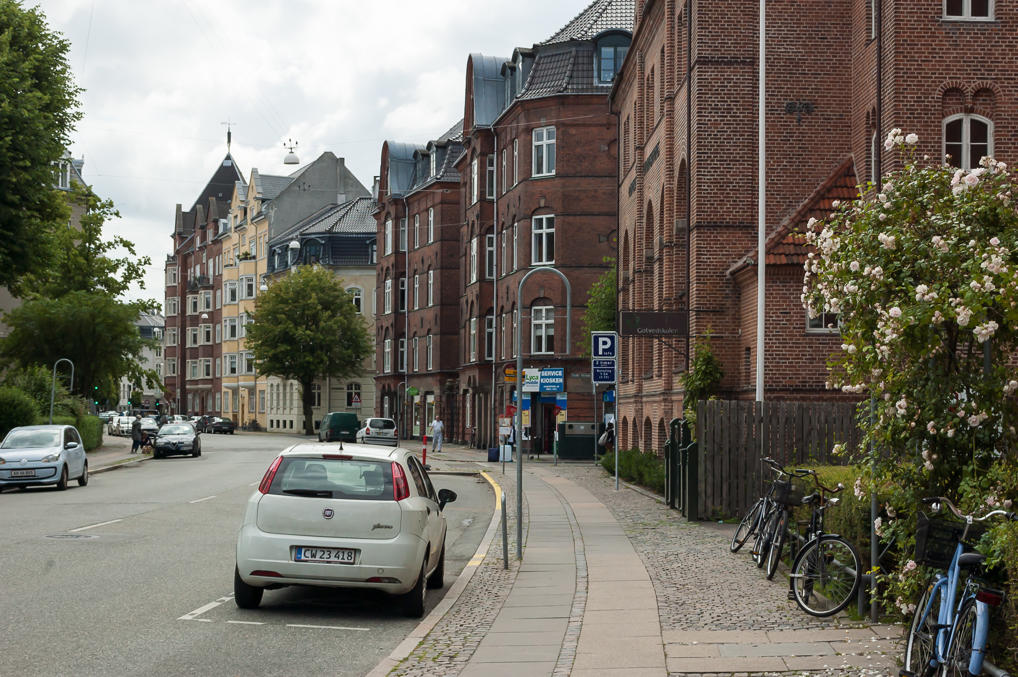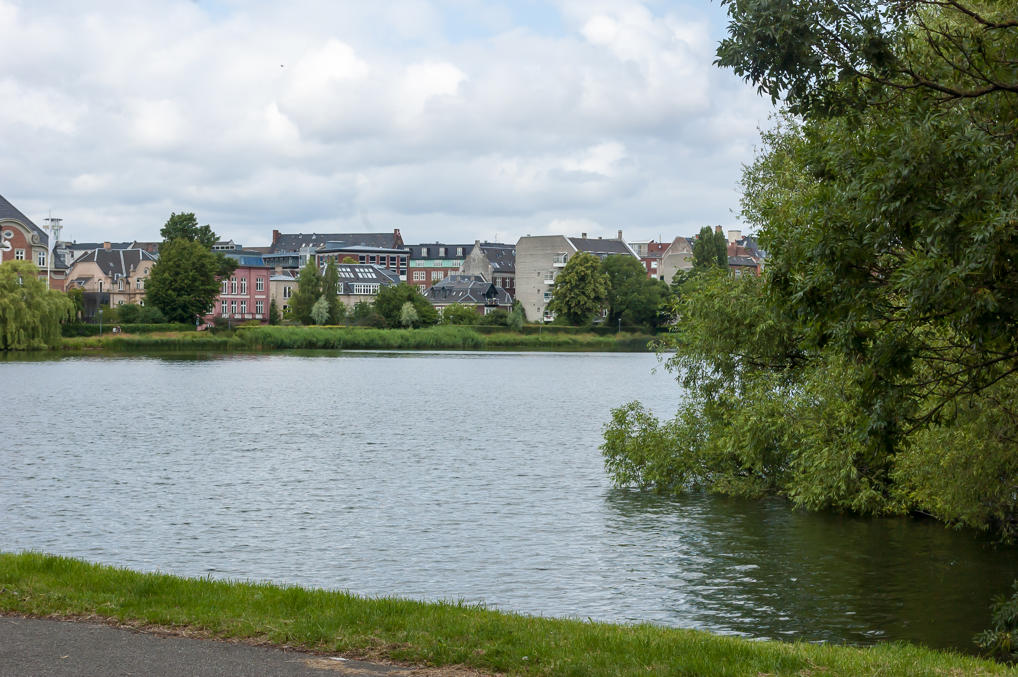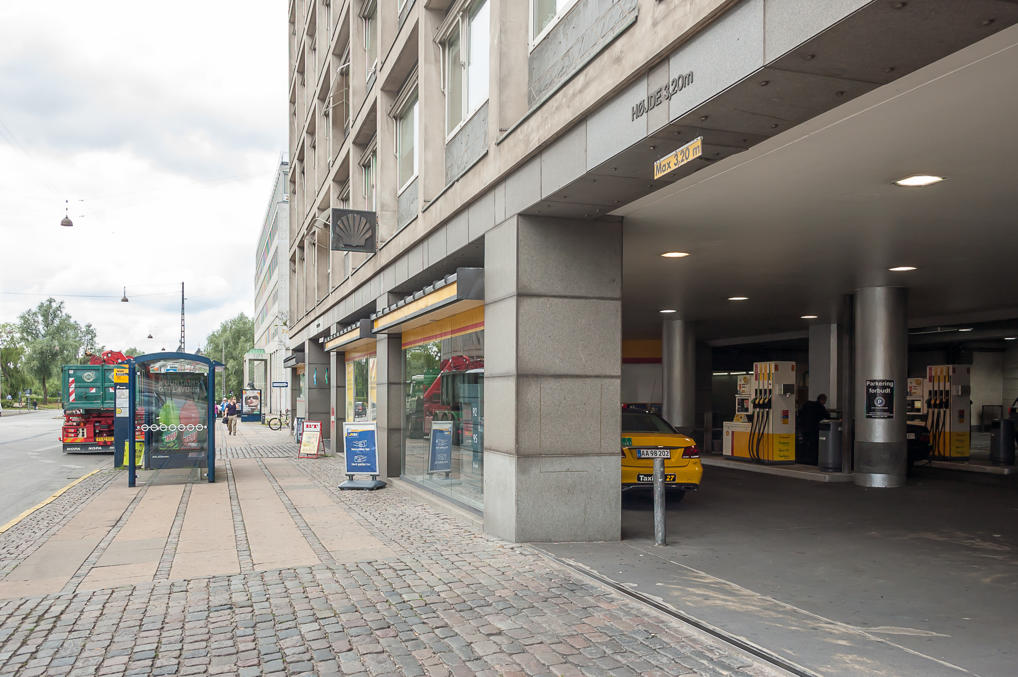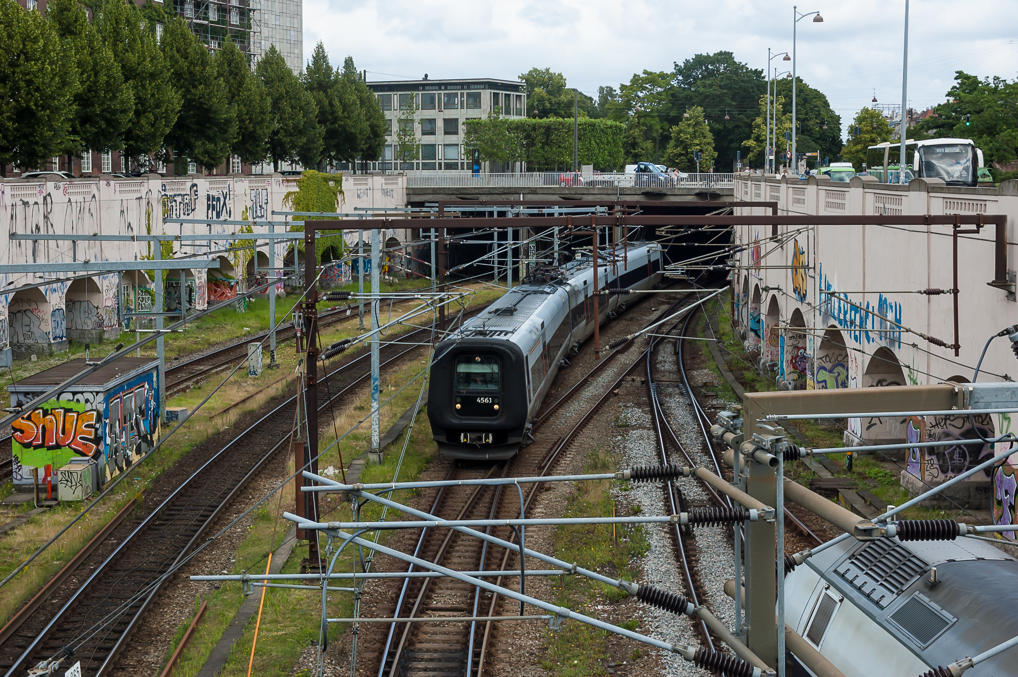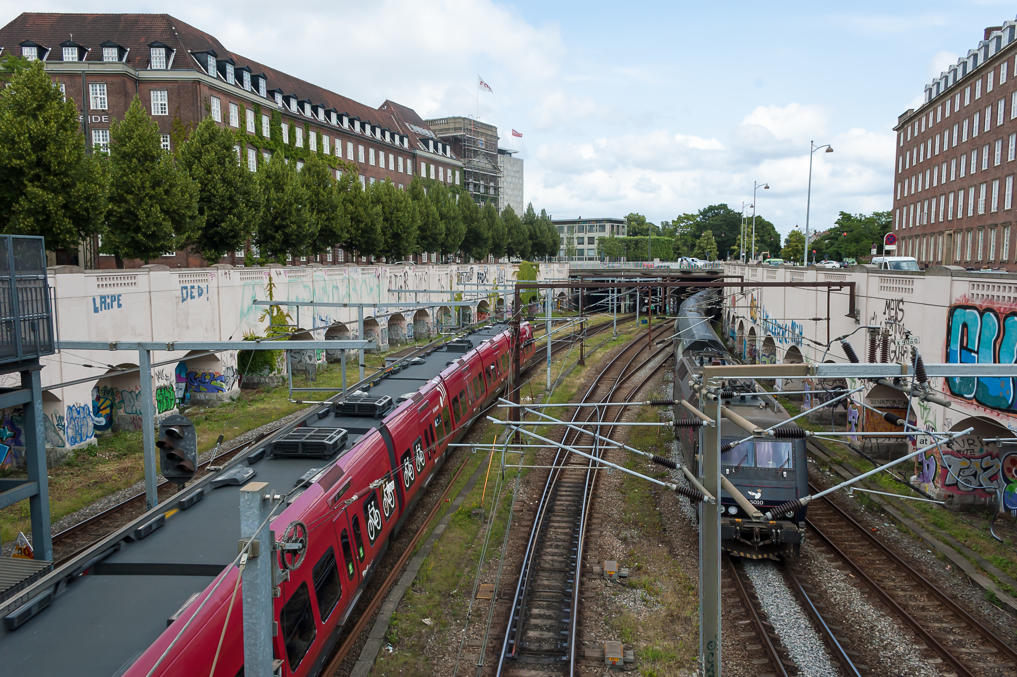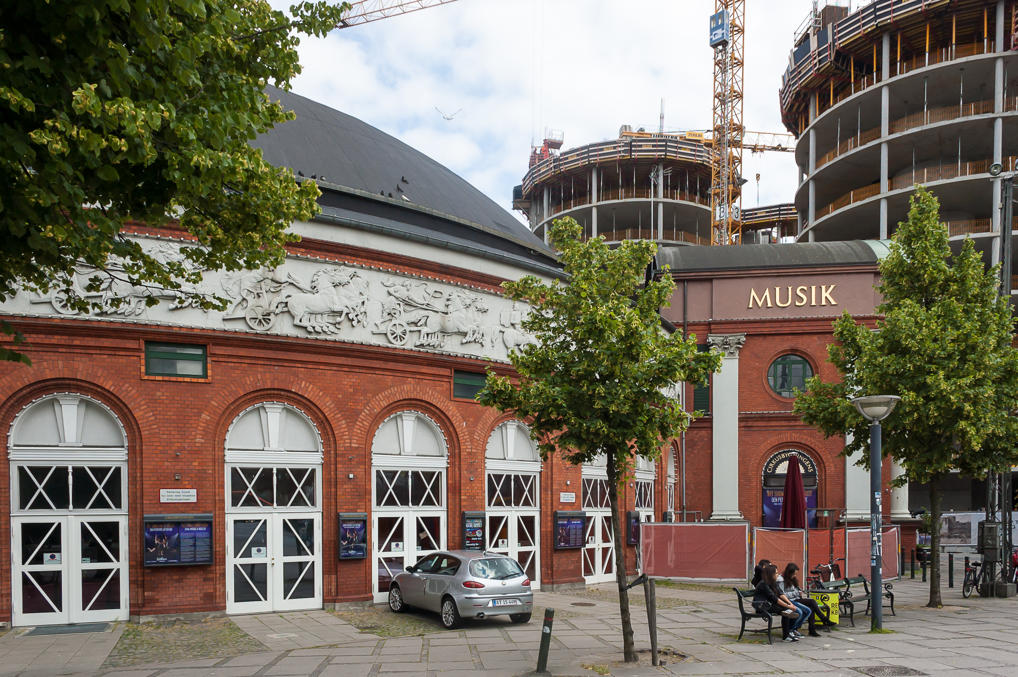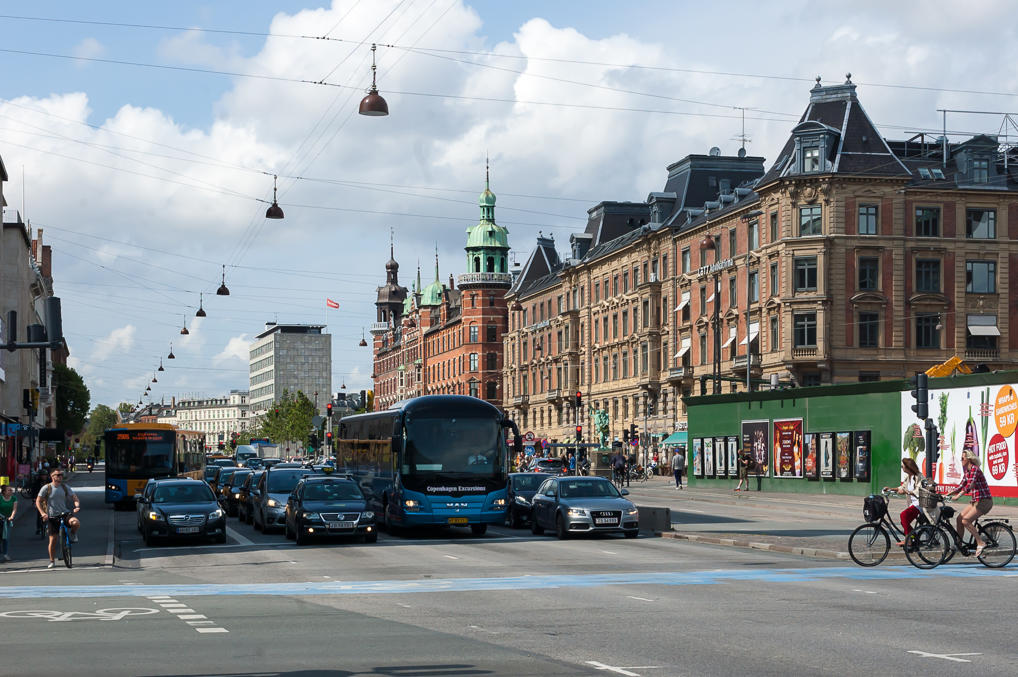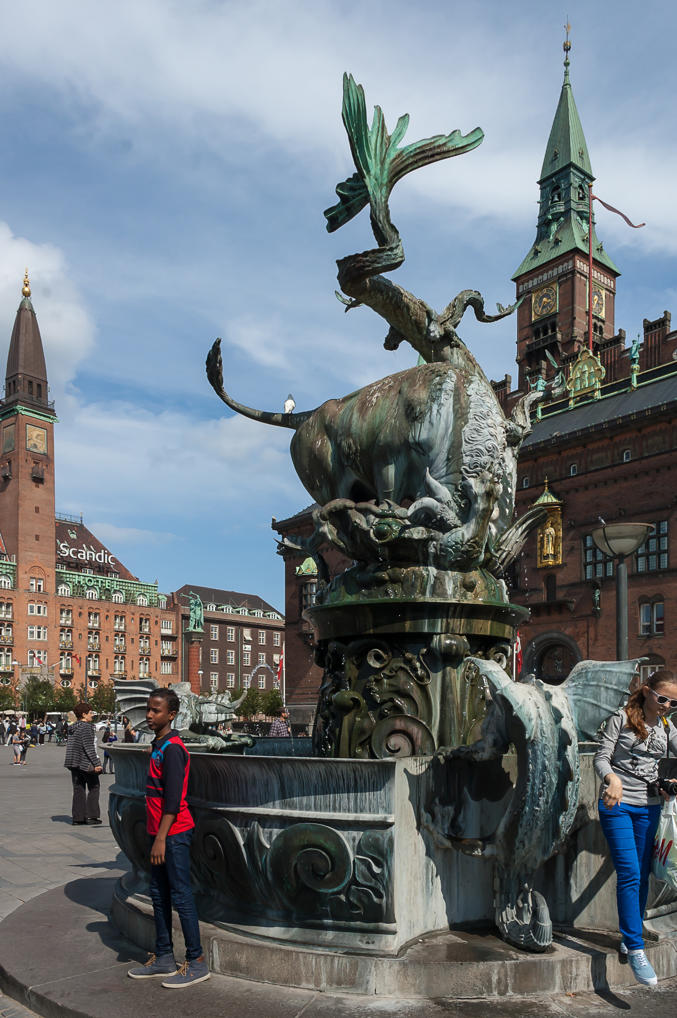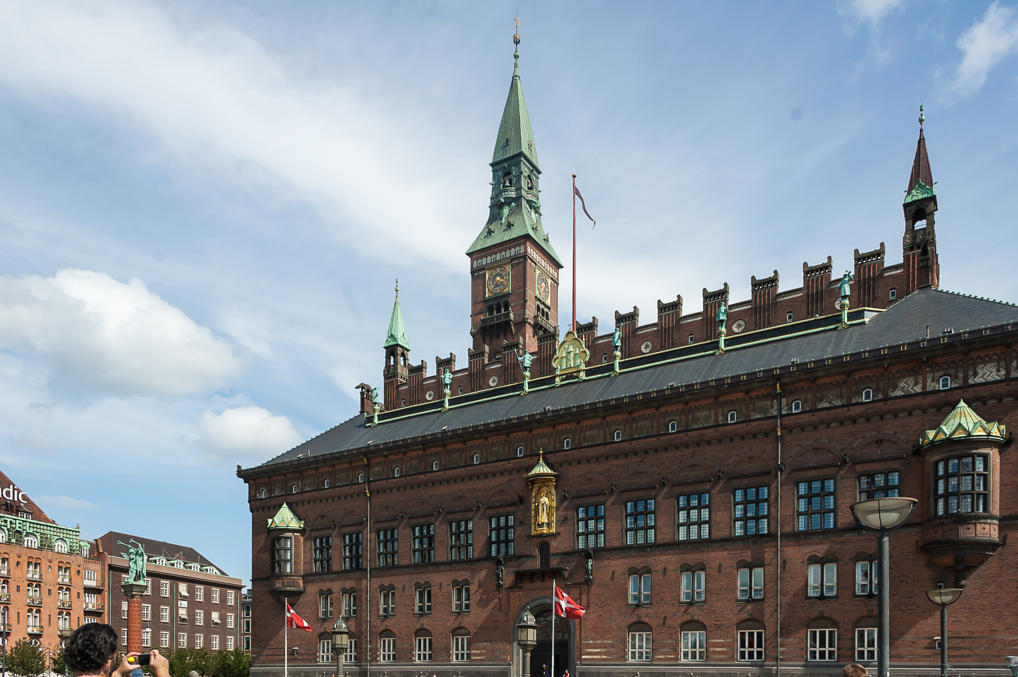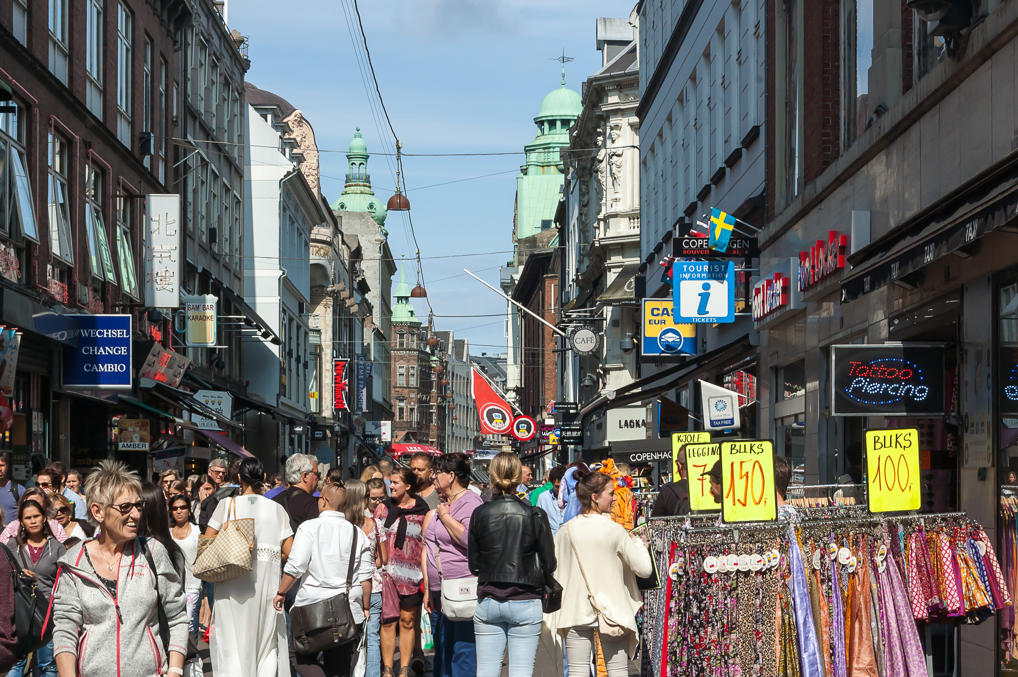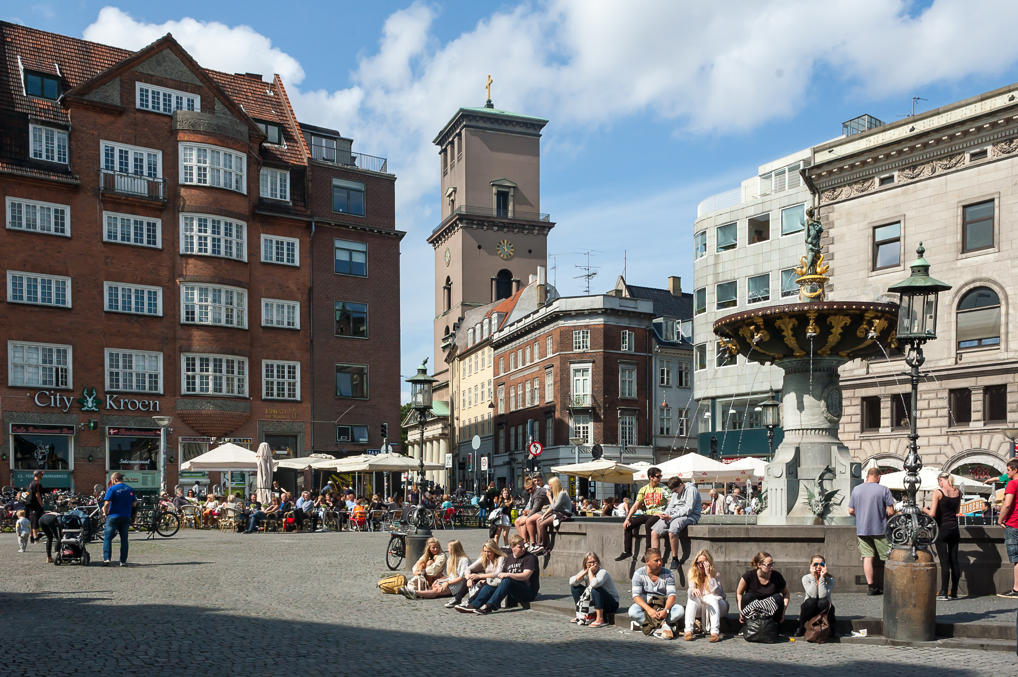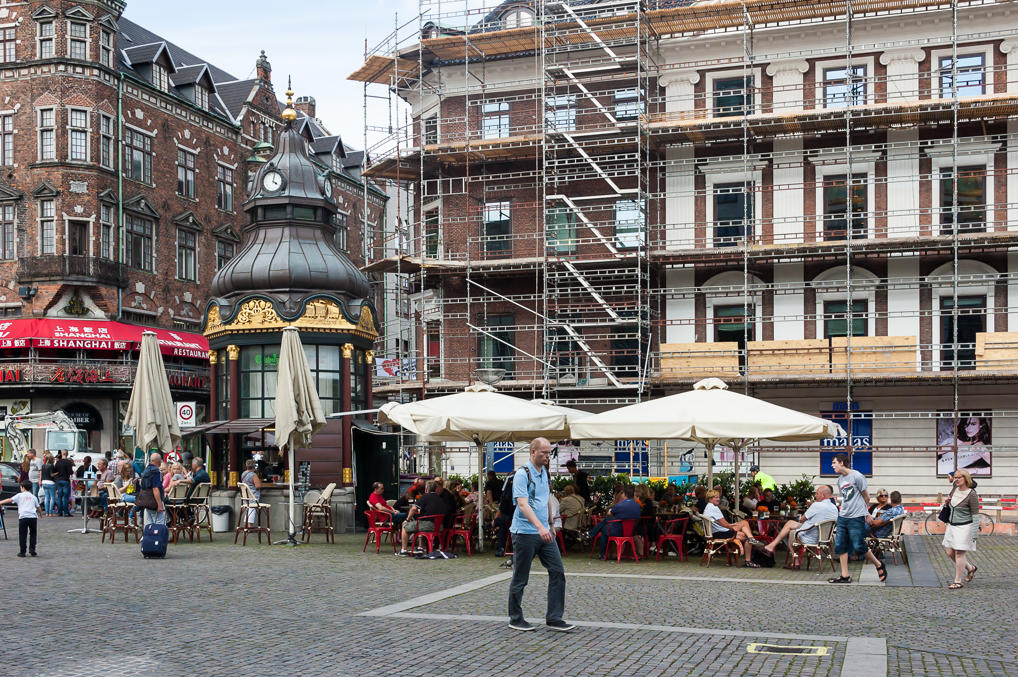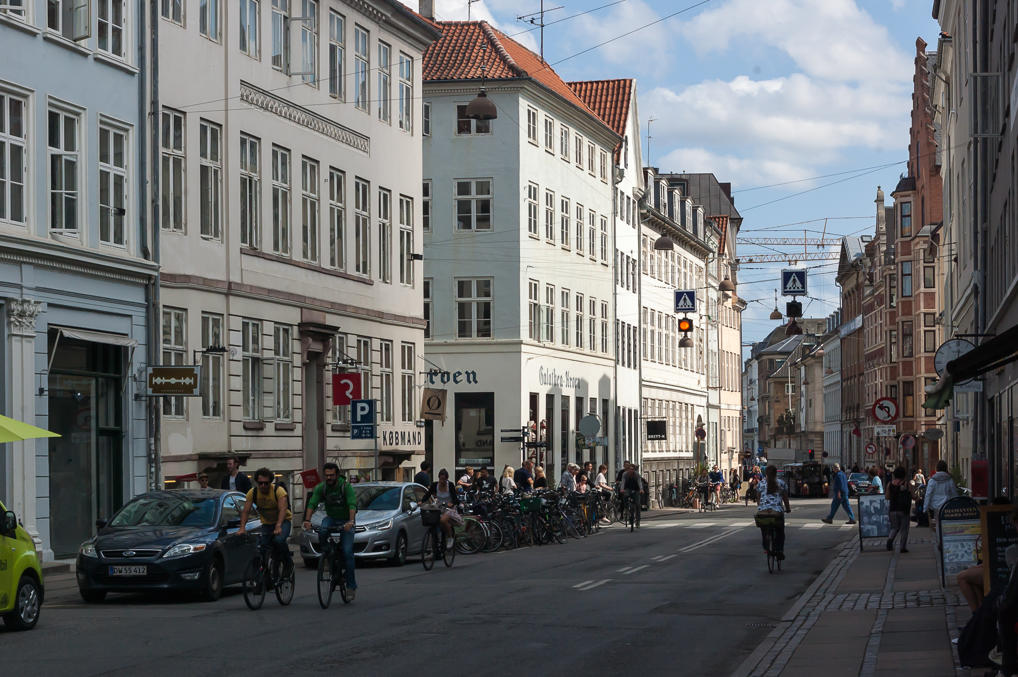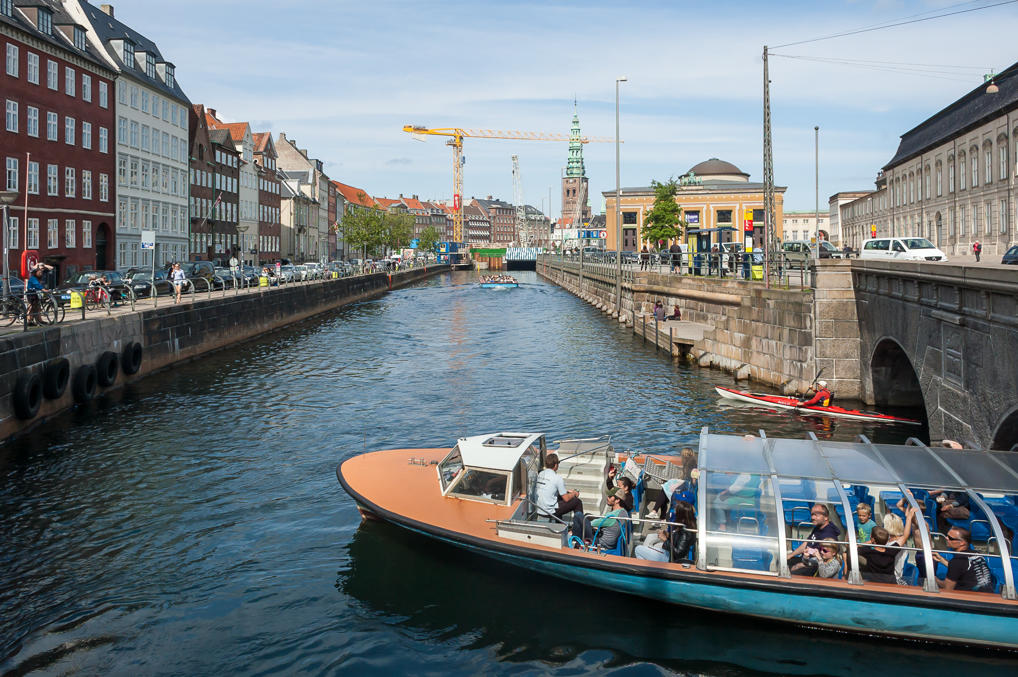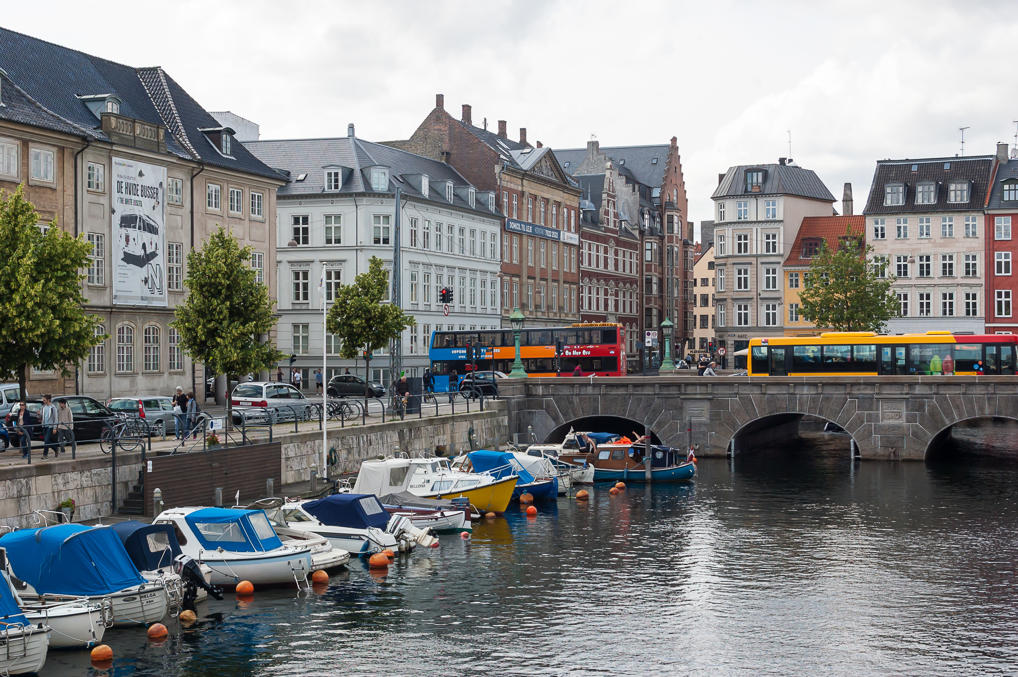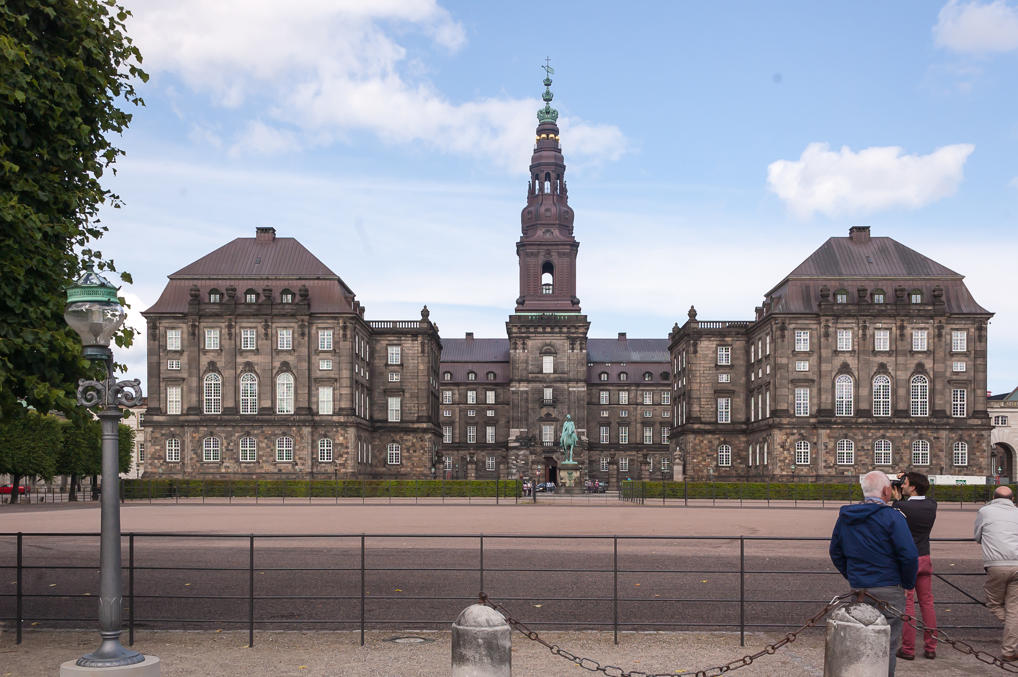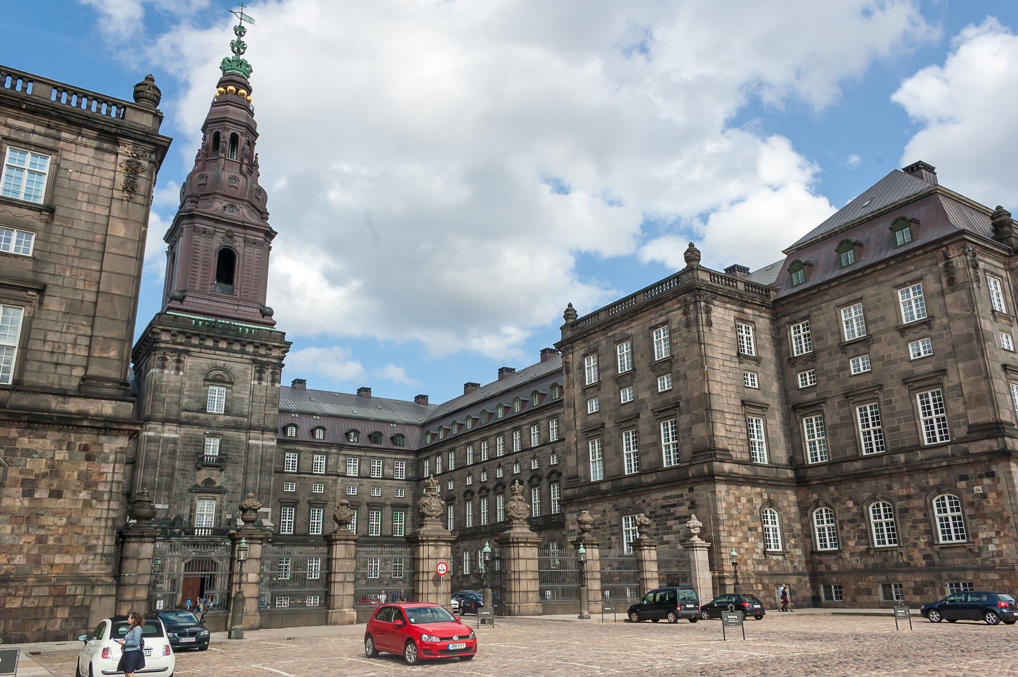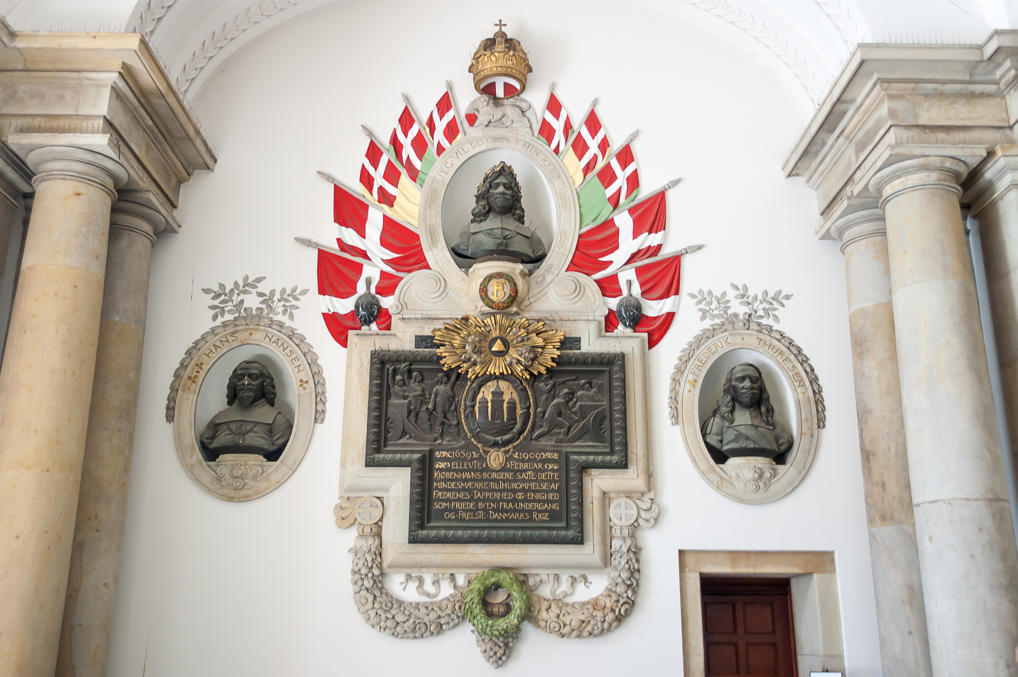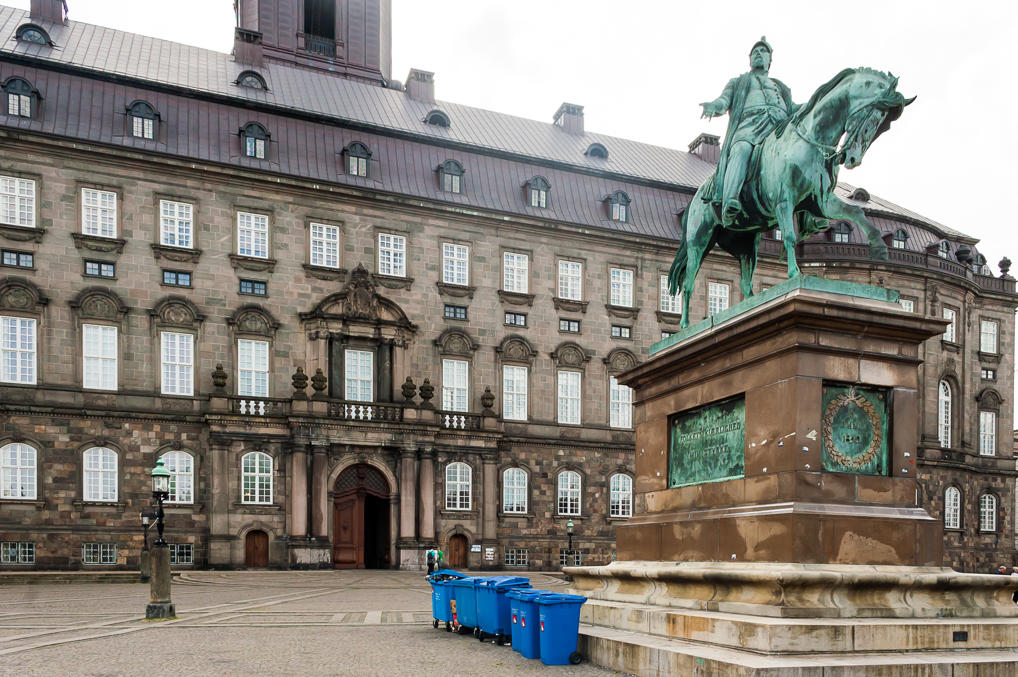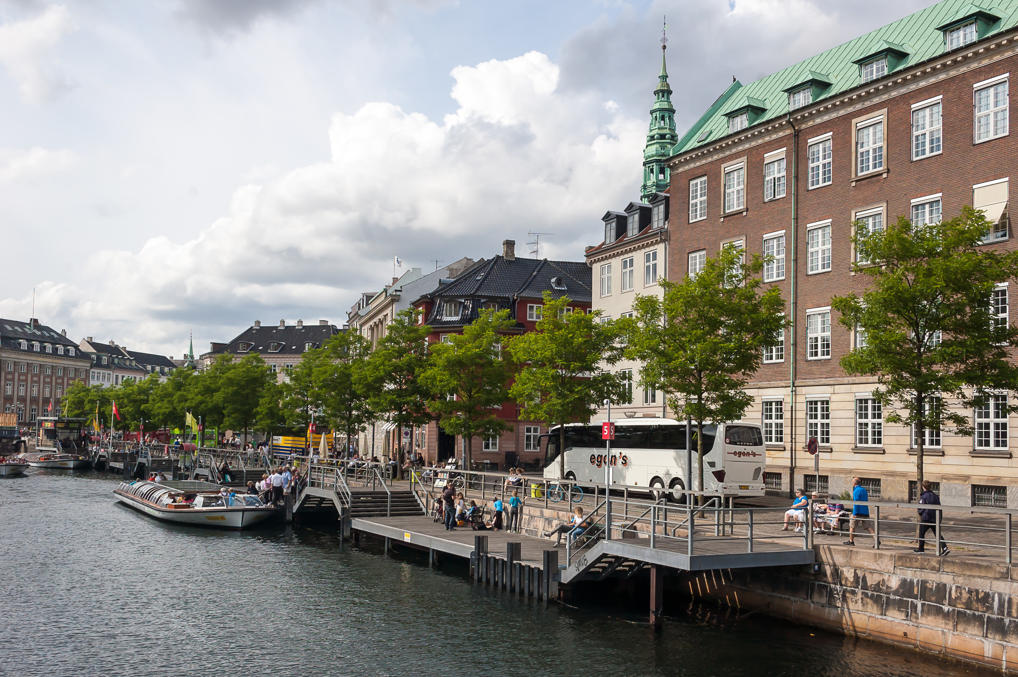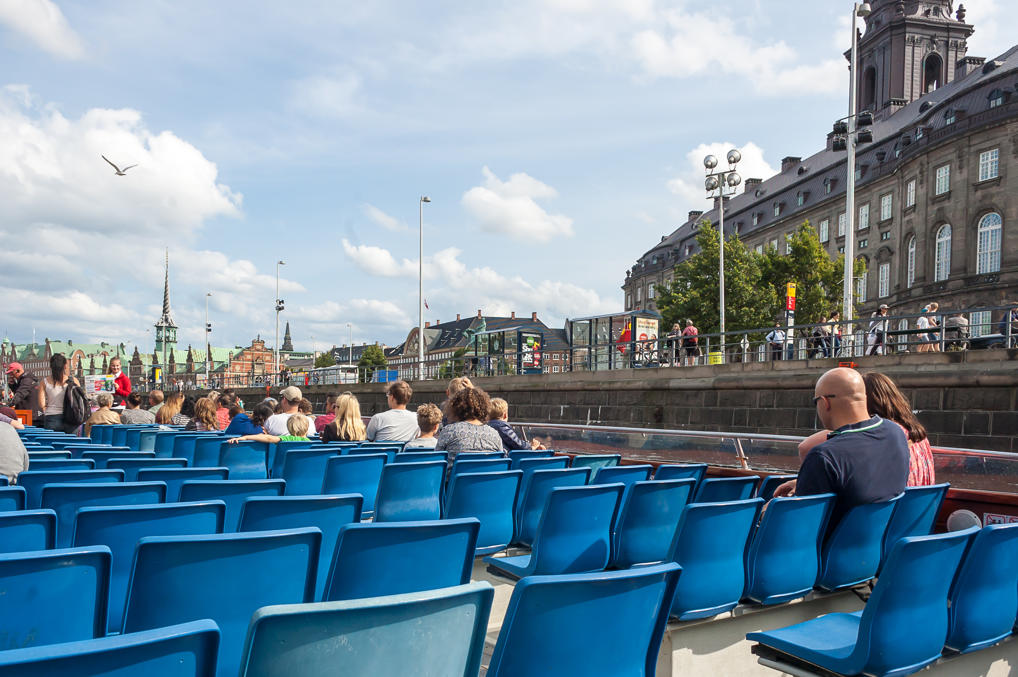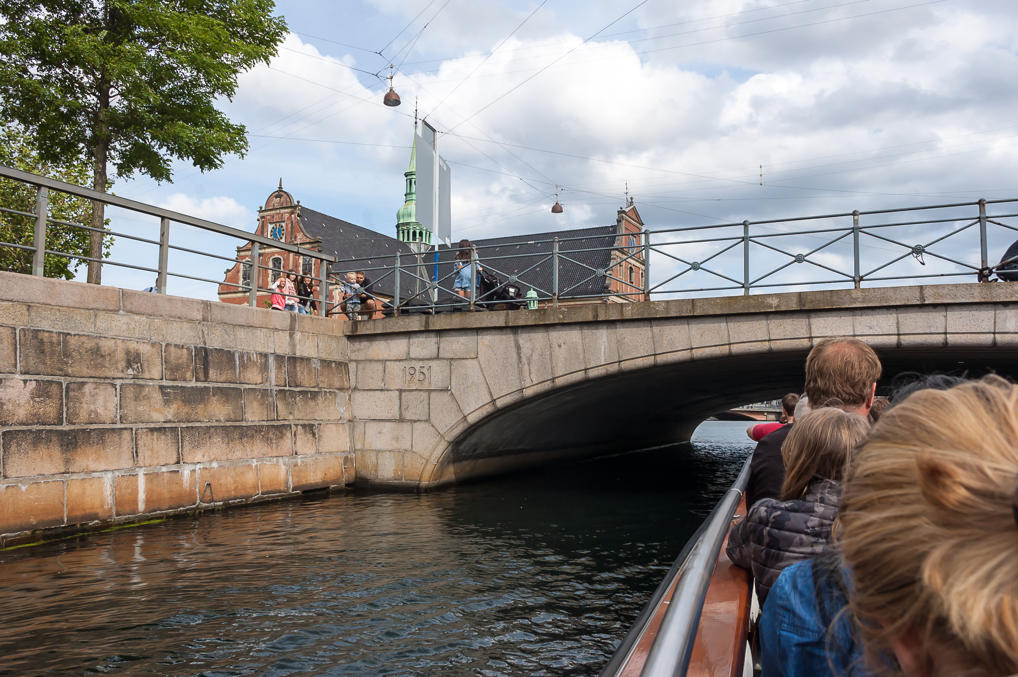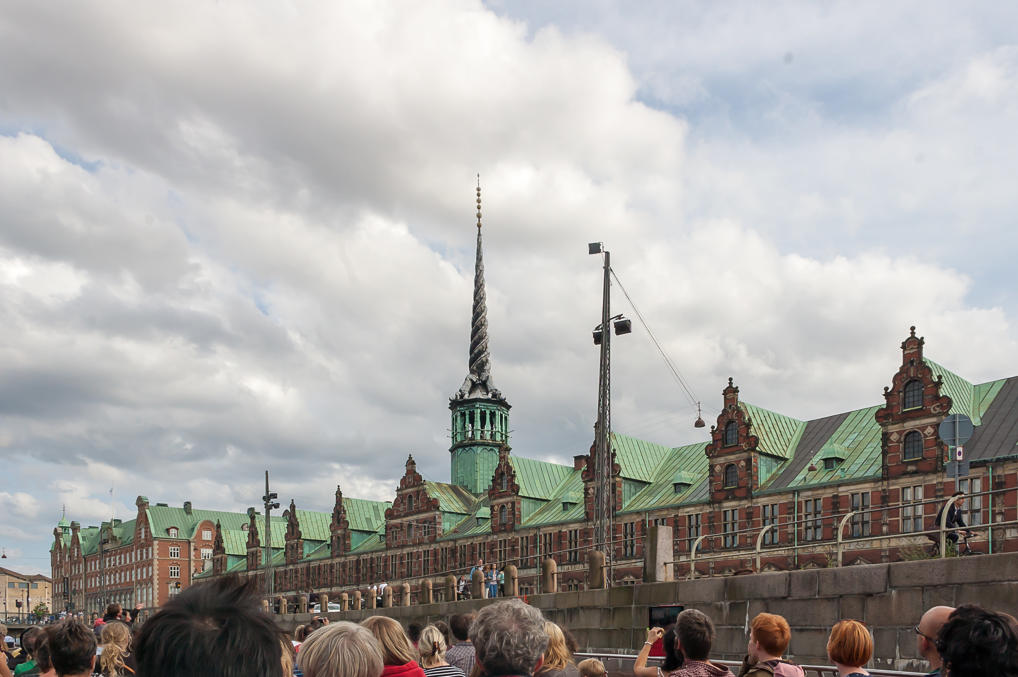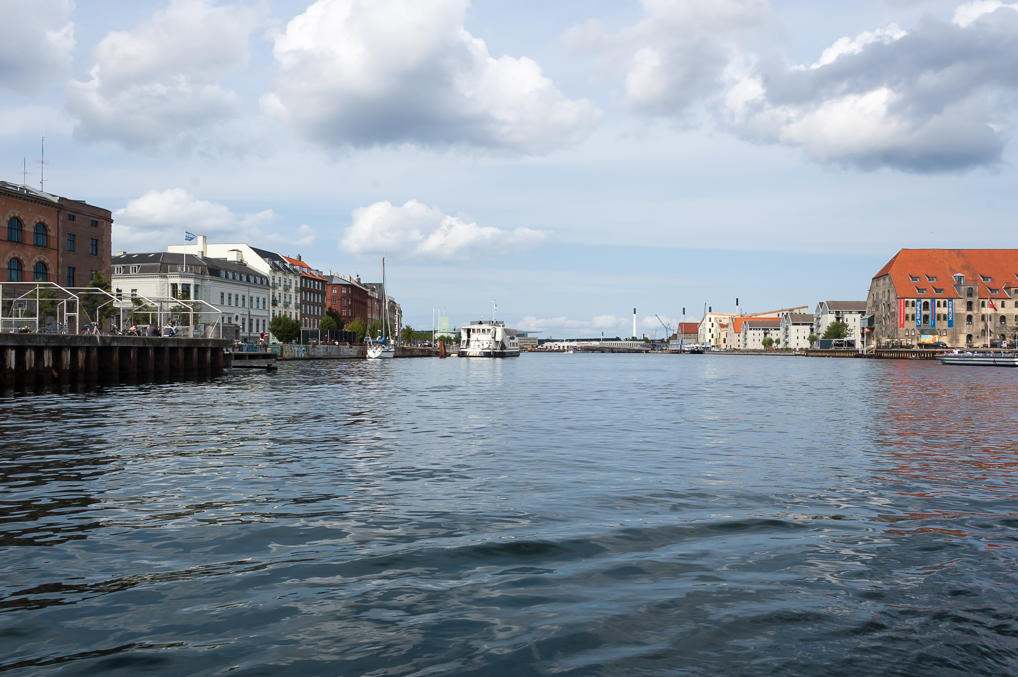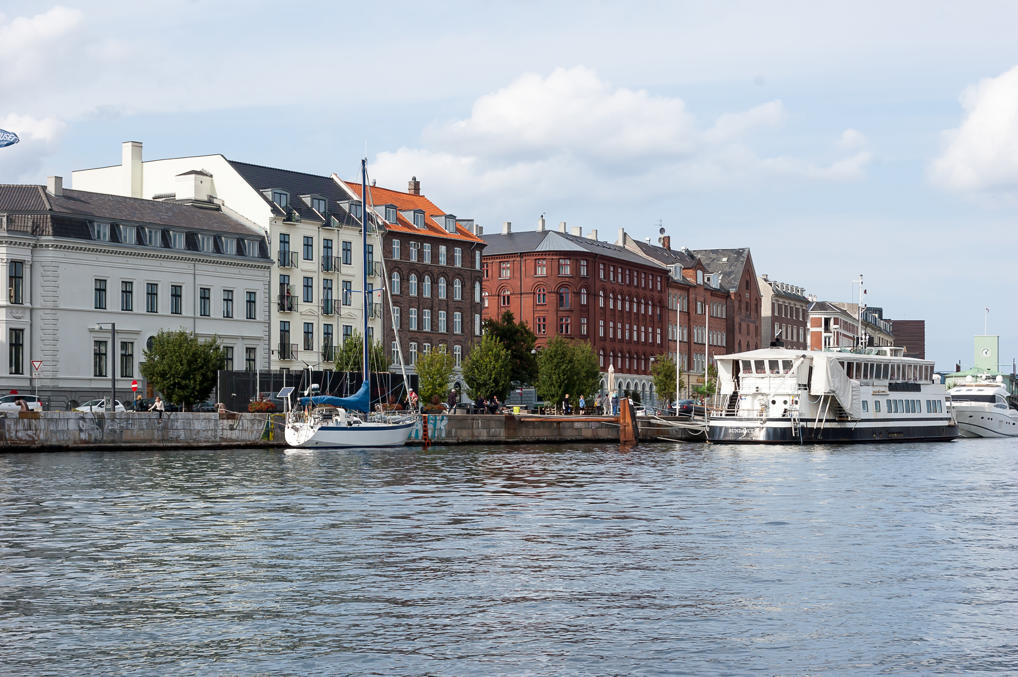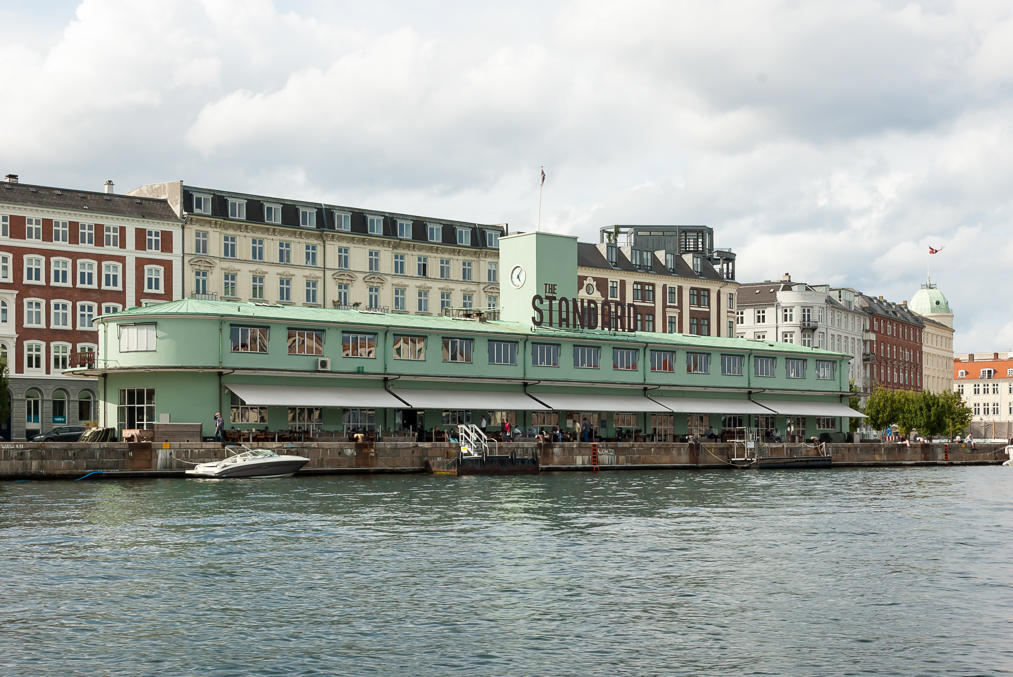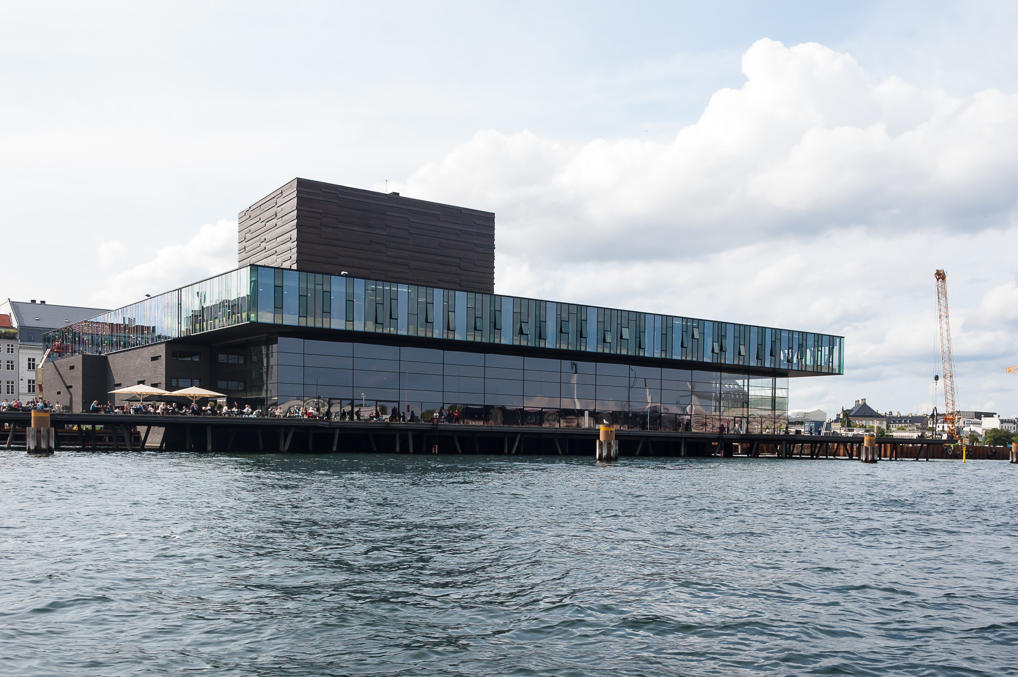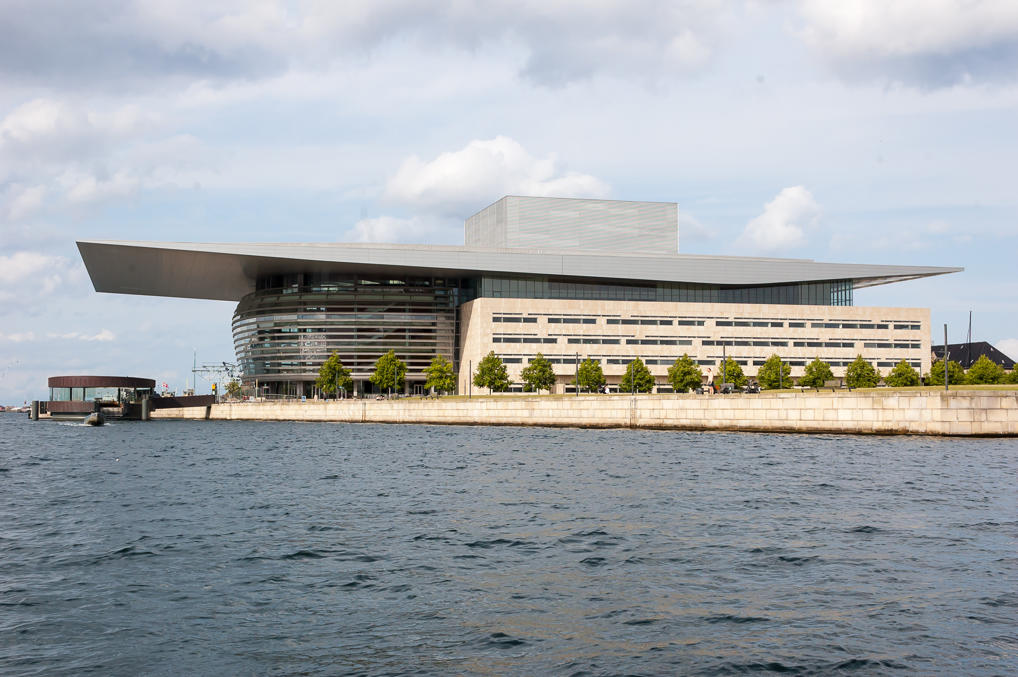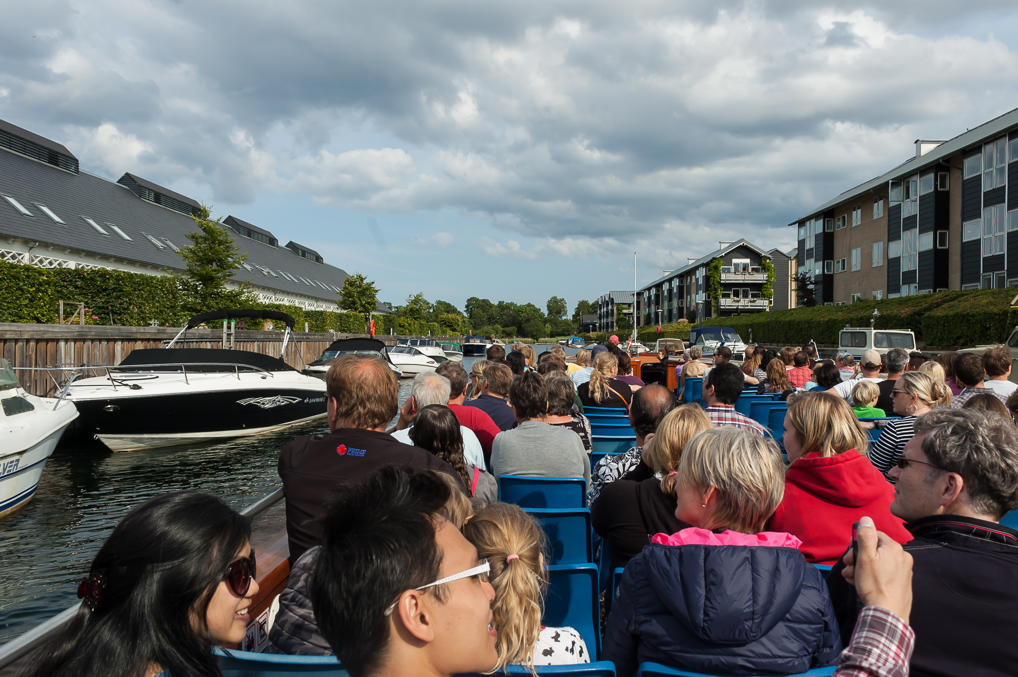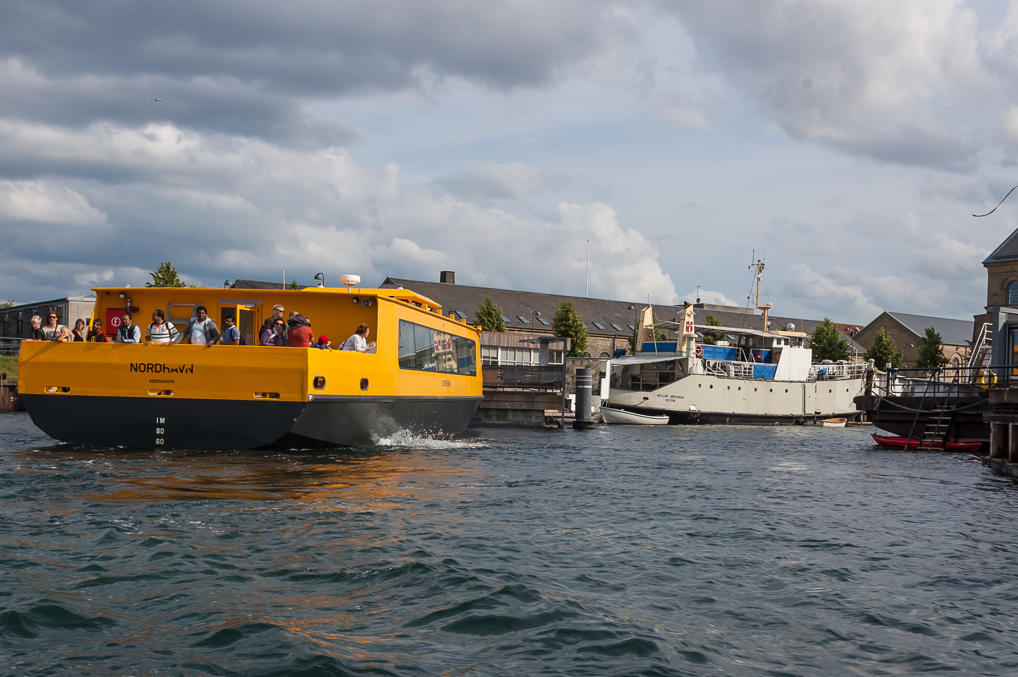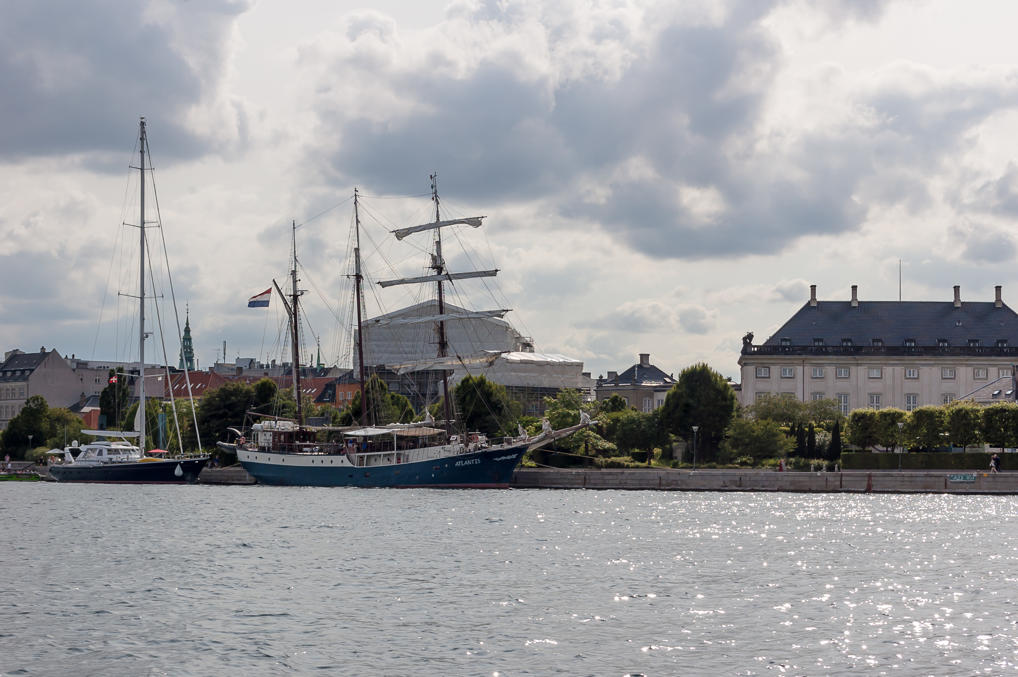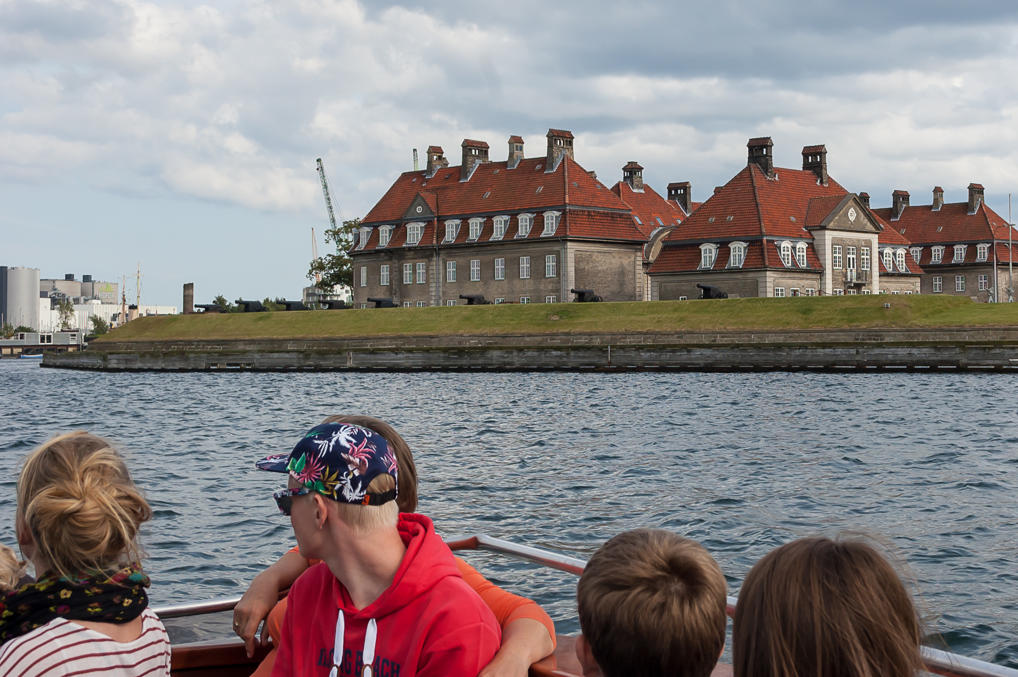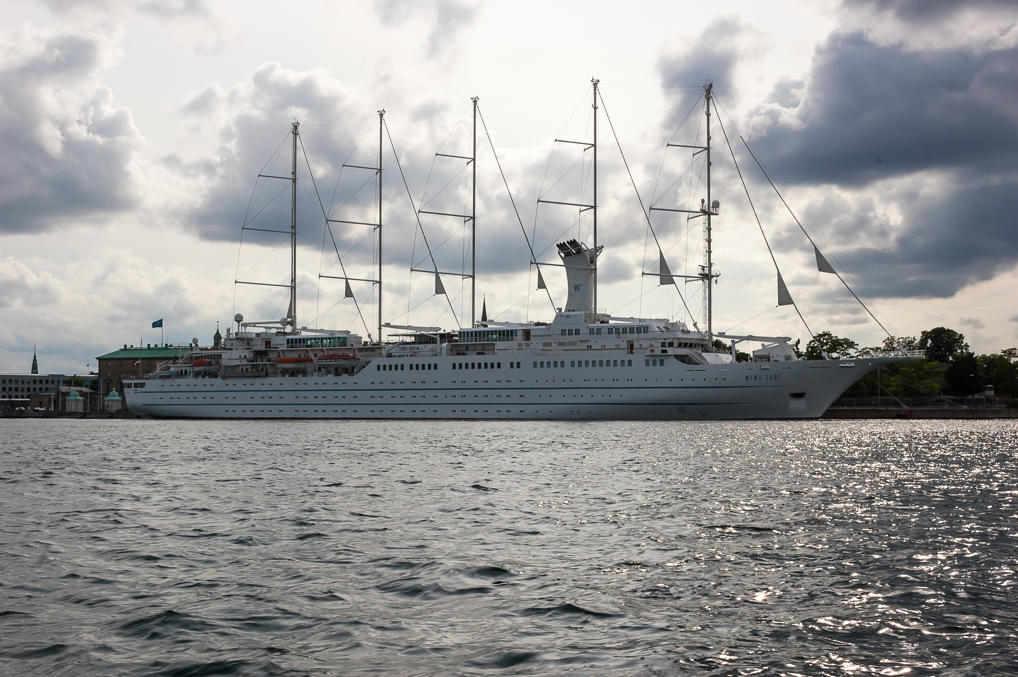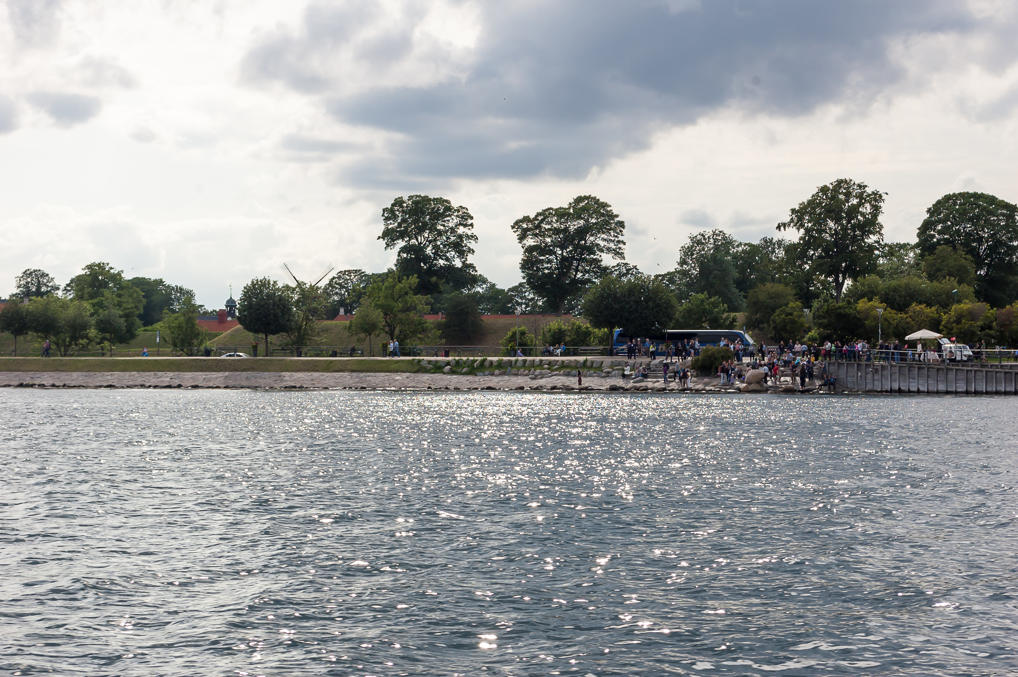During the last year or two, I have gradually come to realize I'm not really a big fan of visiting big cities. Note that it is specifically visiting that I dislike; I'm perfectly fine with big cities in general. After all, I happen to live in one. It's just that it feels like a day or two, or a week, or even a month cannot really do justice to a city like Stockholm or Copenhagen. And too brief an impression can be worse than none, leaving you unsatisfied.
Nonetheless, Copenhagen was the one new big city we visited in this trip, and I must say it was pretty good. It's nearly as good as Stockholm, and Stockholm only wins because it feels "more Scandinavian" and has cool location on the archipelago. Copenhagen's layout is more like St. Petersburg, flat with a single big waterway, many minor channels, and no real seafront.
We woke up in our hotel named Cabinn Scandinavia in the part of city named Frederiksberg, a quiet old neighborhood to the west from the city center, technically considered a separate municipality from the rest of Copenhagen. After we got up and stuff, we just walked in the direction of the center.
I won't write a Copenhagen history essay here. A merchant and fishing town existed here since 11th century; the name literally means "Merchant Harbor". Absalon, Bishop of Roskilde and a great figure in early Danish history built the first castle in what would become Copenhagen in 1186. Roskilde was Denmark's old capital, and it was only in 1416 when Eric of Pomerania moved the capital of Denmark (and of Kalmar Union) here. In the coming centuries it suffered plagues, fires, sieges, and a Nazi occupation, but, well, here it is, beautiful and prosperous, population 580,000 Copenhagen proper, and about 2 million metropolitan area (35% of entire Denmark population).
1. Vodroffsvej Street, where our hotel was located. Apparently named after some Vodroff who used to be a mechant from Russian origins or something.
2. Huge bike tracks and rare and tightly packed parking spots are immediately noticeable. In fact I don't think I saw any open parking lots at all in Copenhagen, just curb parking.
3.
4. Central and western parts of Copenhagen are separated by a row of rectangular lakes, created in the 16th century or so for protection and as city water reservoirs. This one is called Sankt Jørgens Sø (Dan. St. George Lake).
5. This is the first time I saw a gas station directly embedded into the first floor of an office building. Seems a bit dangerous.
6. Railways going to Copenhagen Central Station go right through the middle of the city, but they mostly run in tunnels or excavations and do not affect city planning that much.
7. The traffic is extremely high. You can barely take a picture without at least one train passing through.
8. The trains also all look very different from each other, different models and different ages.
9. Wallmans Circus Building, a concert hall. We found a restaurant across the road and had our breakfast there.
10. The widest street in central Copenhagen is named H. C. Andersen Boulevard. Andersen and his depressing children books are probably the best known Danish thing in the world, apart from Lego (which is also pretty big; I actually saw an unusually high proportion of toy stores there, each of them stocking a lot of Lego of course).
11. Rådhuspladsen, the City Hall Square. Features the City Hall itself (to the right) and a fountain with an odd sculpture depicting a bull fighting a fairly small dragon.
12. The City Hall.
13. Another cool building on the City Hall Square is the Palace Hotel.
14. Strøget, a very long pedestrian shopping street, starts from the City Hall Square. Looks pretty much like any old pedestrian shopping street ever.
15. Gammel Torv (Dan. Old Square), pictured, and Nytorv (Dan. New Square) on the opposite side of Strøget form one big pedestrian square. Gammel Torv has the oldest fountain in Copenhagen, the Caritas Well, dating from 1608.
16. Nytorv used to be a place of several old city halls. The last city hall building (not pictured) still stands and is used as a courthouse. The city's scaffold and pillory also were located at Nytorv; the last public execution (by beheading) took place in 1758, and the last punishment at the pillory took place in 1780. Mind you, Denmark had capital punishment until 1930, and temporarily reinstated it in 1945-1950 specifically for Nazi criminals.
17. Rådhusstræde, a typical quiet non-pedestrian street.
18. Magstræde street.
19. One thing Copenhagen has in common with St. Petersburg is a system of old artificial channels in its center, with stone embankments and numerous small and often beautiful bridges. They make Copenhagen and St. Petersburg waterways look absolutely unlike Stockholm or Helsinki, which are built on archipelagos of numerous rocky islands, and have more natural waterfronts and a much higher area taken by water overall. We're now looking at Frederiksholms Channel, which continues to the right after Stormsbroen bridge as Slotsholmen Channel. Together they separate Slotsholmen Island from the mainland. Slotsholmen means Castle Island, and this is where Absalon's Castle, then Copenhagen Castle, and then three incarnations of Christiansborg Palace where located. Only the third Christiansborg survives to this day.
20. Slotsholmen Channel and Stormbroen Bridge. Named after the Swedish assault on Copenhagen of 1659; the Swedes stormed pretty much this exact spot and were successfully repelled. The current bridge was built in 1915.
21. And this is the third Christiansborg Palace itself, one of the biggest landmarks of Copenhagen. Finished in 1928, much later than you'd expect. It just seems Copenhagen had a habit of burning down every so often (which is why unlike Stockholm it has no super-medieval-old houses), and the second Christiansborg was destroyed by fire in 1884. The first and the original Christiansborg used to be a royal palace, but after it burned down as well in 1794, the royal family moved to Amalienborg Palace, which used to belong to some rich nobles, and by the time the second Christiansborg was finished, they kind of got used to Amalienborg already. The current Christiansborg houses the Parlament, the Supreme Court, and the Prime Minister's Office of Denmark. Thus being the only known instance in the world of the same building housing all three branches of goverment.
22. The person in front of the palace is King Christian IX, who ruled in 1863-1906 and was by all accounts a really swell guy.
23.
24. Some sort of memorial under the arch of Christiansborg.
25. Another equestrian statue in the back of Christiansborg belongs to King Frederik VII, who ruled in 1848-1863 and signed the first constitution of Denmark in 1849. (Technically Denmark had a constitution since the 17th century, but that was a constitution than explicitly authorized absolute monarchy, which is a pretty unusual thing.) Apparently also a really nice guy, he doesn't really deserve having these trash bins put right next to him.
26. Frederiksholms Channel beyond Christiansborg.
27. And just like St. Petersburg, Copenhagen has lots of boats offering tours along its channels. After some deliberation, we bought a ticket for one of these, and were not disappointed in the least. The tour guide explains stuff in several languages including English of course, but it was pretty hard to hear in the back of the boat over the sound of its engines.
28. The tour starts from Frederiksholms Channel, and the first bridge we pass is Holmens Bro, which literally means Island Bridge.
29. Passing the cross-shaped Church of Holmen. This part of the city, named just Holmen (Island), indeed used to be an island originally, but it's now connected to the mainland. Holmen used to hold old shipyards, and the Church of Holmen is a naval church, with graves of Danish naval heroes and so on.
30. Across the Church of Holmen is a very recognizable long building, with a very tall spire in the shape of four intertwined dragon tails. This is the Børsen, or the Royal Stock Exchange. Built in 1640, it still holds the Danish Chamber of Commerce.
31. Leaving the Frederiksholms Channel for the biggest channel of Copenhagen. Copenhagen (again like St. Petersburg) is bisected by a huge waterway. In Copenhagen's case it is a strait separating islands of Amager and Zealand. Most of old Copenhagen is on Zealand (to the left), and this is what we've called "the mainland" before, as it's farly large, about 100 km across; Roskilde, Helsingör, and other towns occupy its more distant parts. Amager (to the right) isn't that small as well, being 10 km across, and holding Copenhagen Airport, named Kastrup, and a lot of the new developments of Copenhagen. The part of Amager just across the old city is called Christianshavn. Most of it is pretty nice, but it also holds the infamous Christiania, a neighborhood of hippies and junkies. (Christiania was once of the destinations we ended up missing.)
Oddly enough, this big strait, as wide as our Neva, doesn't seem to have any particular name at all, or at least I couldn't find it in Wikipedia and the like. So henceforth I'll call "the main channel".
32. Copenhagen waterfront.
33. Danish Architecture Centre, occupying an old Christianshavn warehouse.
34. The Standard Jazz Club, also a luxurious restaurant, in the old ferry terminal building.
35. If you think St. Petersburg has too few bridges across Neva, you haven't been to Copenhagen. There are only two bridges across the main channel, plus two pedestrian/bike bridges, plus a large bridge in the distance, carrying the huge E20 motorway which continues on to Øresund bridge. A new bridge in central Copenhagen, called Inderhavenen Bridge (Dan. Inner Harbor), is under construction, expected to be opened in February 2016. It will be yet another pedestrian/bike bridge though. To have a car in Copenhagen means to suffer, apparently.
36. Royal Danish Playhouse, one of two new theater building at the waterfront. Both of them look like something from a late Soviet-era. This one is used for dramatic theater.
37. The second modern waterfront teather, the Copenhagen Opera House.
38. Leaving the main channel for a while and entering one of the channels of Holmen, the northern part of Christianshavn (and apparently a completely different Holmen from the one across Christiansborg with a cross-shaped church). Formerly a naval base, most of it has been now converted into a very affluent-looking neighborhood.
39. The most striking building there is Torpedohallen, a torpedo boat construction hangar which has also been converted into a residential building. If you wonder this page says that a four-room apartment here cost 4,450,000 Danish krones in 2005, which translated to about €600,000. (Forgot to mention, Denmark has its own currency too; a Danish krone (DKK) is worth about 25% more than a Swedish krona (SEK).)
40. Some lucky Torpedohallen resident watering plants.
41. Copenhagen has a small system of water buses linking the main channel shores. Painted in distictive ferry-yellow color, these are called Copenhagen Harbor Buses. Like Stockholm's Djurgården ferries, they are integrated into city public transit system, sharing tickets and fares.
42. Entering the main channel yet again. Nyholm, the northernmost part of Holmen, is still used as a naval base, at least formally. Only a few ships are moored there, the most prominent being HDMS Peder Skram, a frigate commissioned in 1966 and turned into a museum ship now. Mind you, Denmark actually takes its navy (and military in general) fairly seriously, and is an active member of NATO.
43. Atlantis, a cruise sailing ship from the Netherlands, moored near Amaliehavn park.
44. Sixtus Battery (Batteriet Sixtus) is a prominent feature of the northern shore of Nyholm, a row of cannons on a levee.
45. Another cruise sailing ship, this one named Wind Surf, modern (1990) and huge. It looks pretty ugly to me, as if these masts are purely a cosmetic afterthought. It actually can raise sails alright, although its main propulsion system is diesel.
46. The northernmost point of this tour. All these crowds are gathered here to gawk at the (supposedly) main sight in Copenhagen. We'll have a closer look ourselves in the next part, so, to be continued.
